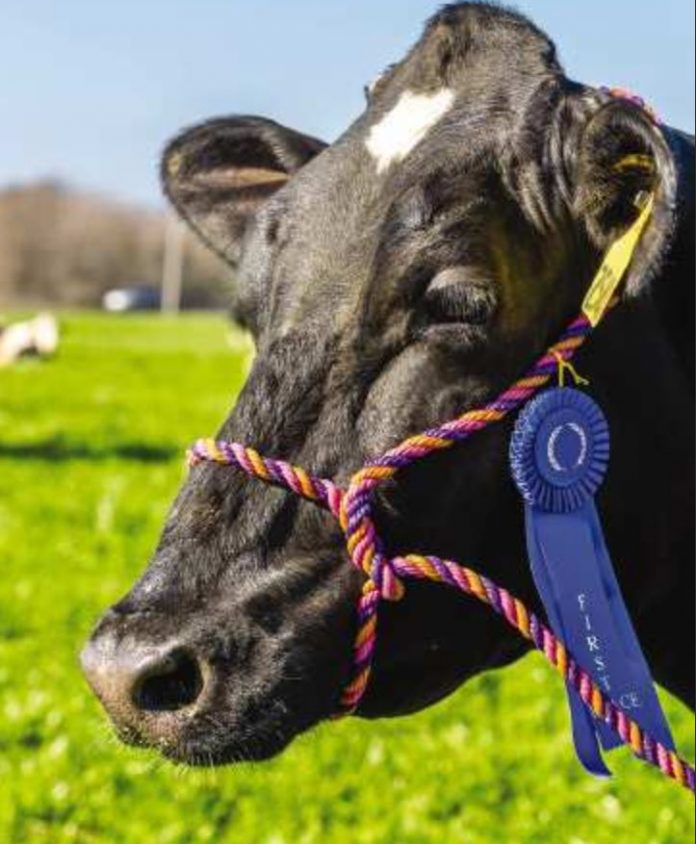The San Diego County Fair market livestock show for 4-H and Future Farmers of America members will be a virtual show this year, and both exhibitors who will be participating in the subsequent on-line auction and students whose animals are pre-sold can participate in the virtual fair process and earn awards if their animals are judged worthy of such honors.
“There will be a virtual show and a virtual auction,” said San Diego County Fair exhibits director Jacky Eshelby.
The county fair board made the decision to hold the virtual show and auction May 19. A May 18 virtual presentation reviewed the plans with the county’s 4-H and FFA group leaders, and the decision was released to the 4-H leaders and FFA advisors May 20.
All market animals must be taken to a processing plant approved by the U.S. Department of Agriculture. No such rabbit meat processing plant exists in the area. “Unfortunately we are unable to accommodate the rabbit projects this year with the constraints which have been placed on us by state rules mandated by the Division of Fairs and Expositions,” Eshelby said.
When the auction actually occurs on the fairgrounds the buyers physically take home the rabbits, which is also the case for rabbits purchased at a barn sale. Because the virtual auction livestock will subsequently be shipped to the fair, the inability to process rabbit meat led to the elimination of rabbits as part of the livestock market show.
Students who have pre-sold an animal may still enter the market livestock show. “They can still enter the animal in the virtual show and be part of that,” Eshelby said.
The entrants will be sent a PDF file with a tag for each animal. “We’ll give each exhibitor in the show a number,” Eshelby said. “The exhibitors will upload 90-second videos.”
That will allow the judges to view the animal in various positions. The video must be submitted by June 20.
“It’s up to the exhibitor to come up with an estimated weight,” Eshelby said.
That may not create perfect weight division brackets, but the lightweight, mediumweight, heavyweight, and superheavyweight champions and reserve champions will be judged for both 4-H animals and for FFA animals. The weight class champions and reserve champions will compete for FFA grand and reserve champion and 4-H grand and reserve champion, and those four grand and reserve champions will compete for supreme grand champion and supreme reserve champion.
The judging will take place June 22-24 and will be live through video. “The judge will actually talk about the animal,” Eshelby said.
The judges will announce the top champions June 25 at 6:00 p.m., although the they will not be at the fairgrounds. “They’ll be virtual, too. They’ll be calling in,” Eshelby said.
An animal must receive a blue ribbon, which indicates market quality, to be sold at the fair auction. That includes meeting weight, health, and other criteria. The blue ribbon standards will be enforced when the animals are sent to the fair for processing. “They still have to meet minimum qualifications when we take possession of the animal,” Eshelby said.
An exhibitor may only sell one large animal at auction (an exception is made if the same person raises more than one FFA or 4-H grand champion or reserve champion animal). That will still be the case. “They can show as many as they want in the virtual show, but they can only sell one animal,” Eshelby said.
When the auction is held in person the supreme grand champion and the supreme reserve champion are the first animals to be auctioned. A pre-sold animal is still eligible to win those awards even though it will not go to the auction block. “We want to reward the kids who went out and found buyers,” Eshelby said. “That’s my biggest concern, making sure we have a buyer for each animal.”
If the animal is not sold at auction a barn sale is negotiated, and that often involves a fixed price. The in-person auction sells animals by the pound.
The virtual sale will per head rather than per pound. “It will be a little bit different not only because it’s virtual,” Eshelby said.
What could be called a practice session for buyers will take place on Friday, June 26. “The first day will be considered like a preview auction so you can bid,” Eshelby said. “People who are new to it can kind of look through the process.”
Updates on the process will be posted on the www.facebook. com/sdfairjuniorlivestockauction Website, which can be accessed directly from the Web rather than necessarily from Facebook.
The actual auction will begin at 9:00 a.m. June 27, which is a Saturday. “They’ll be able to talk about each exhibitor and their animal,” Eshelby said.
A preview auction was held at the Sacramento County Fair over Memorial Day Weekend. “Every animal had a live bid after the first day of preview, so it was very helpful to the students,” Eshelby said.
The on-line auction has the potential of attracting additional buyers. “A lot of people are getting interested in it because you don’t have to be live at the fairgrounds,” Eshelby said.
Another advantage of the virtual auction is that the exhibitor can have additional involvement.














